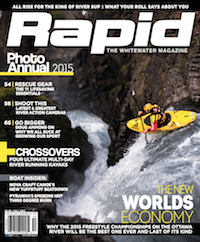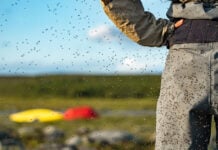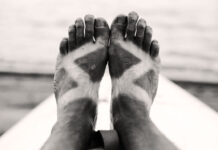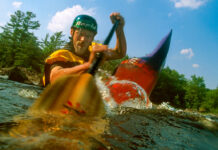When the Whitewater Rodeo World Championships was first held on the Ottawa River it was 1997. Jewel was topping Billboard pop charts. The Titanic was sinking and smashing box office records. My buddies at the rafting company went to the River Club as Dirk Diggler and the cast from Boogie Nights. And the Perception Arc and Spark (Google them) were hot boats on the Ottawa River.
The very best paddlers were just paddlers. Nobody considered themselves athletes, or even if they did, nobody else did. Training was catching rides along the way while waiting for commercial raft trips. The best paddlers logged river days, not training sessions. The ’97 Worlds showed the world that the left side of Horseshoe at the bottom of McCoys on the Ottawa was no longer a God forsaken, ass whopping beatdown of a lifetime that one avoids at all costs. It was a place to side surf, spin, pirouette and figure out cartwheels. Even shorter kayaks with flatter bottoms and slicier ends were on the way. And they were the future growth of the sport. At least that’s what we all believed at the time.
As rodeo evolved into freestyle, winning competitions became the way of selling boats. While companies and their designers—who in most cases were competitors themselves—put more emphasis on the hottest new tricks, most paddlers continued to run rivers from top to bottom.
The athletes tired of hole moves and transitioned to bigger and faster waves. Kayaks got shorter, fatter and bouncier. Freestyle kayaks became so specialized they started to suck for paddling down rivers. The tricks for which they were designed were beyond most boat-buying weekend paddlers. Whitewater kayaks sales peaked around 2003.

In our Fall 2015 issue, we had Conor Mihell’s feature on the upcoming 2015 World Freestyle Kayak Championships, which are back on the Ottawa River for the third and maybe the last time. If you don’t believe whitewater freestyle and its long road to the Olympics is the future growth of our sport, then you’re probably in the camp that feels the future of whitewater looks friendlier, like class II. You’ll enjoy our shootout of the four best multi-day river running kayaks, also found in our Fall 2015 issue.
While none of the brands included were willing to go on record and offer hard sales numbers, each confirmed they are excited about the growth they are seeing in crossover sales and are consequently building their catalogs with more crossover models.
What’s old is cool again.
We’ve come a long way in understanding how hull shape and subtle variations improve performance. The last time we were excited about 10-foot-long kayaks we were using Tevas wedged in as hip pads. We now get the very best outfitting, plus dry storage and the built-in floatation and convenience of a stern bulkhead and hatch. What’s even better is that almost 20 years later we get all this at virtually the same price.
When it comes to predicting the future of whitewater I’ve given up asking enthusiasts and those of us in the industry. Instead I like to play the game Would You Rather. I play with friends and family and complete strangers I meet on the trail and chairlift. I choose people I know who ride mountain bikes or ski, and other prime candidates to someday wander into a paddling shop. I ask them, “Would you rather spend the afternoon dropping into a wave called Garburator or spend a couple weeks exploring the Grand Canyon?”
If they don’t immediately choose the canyon, they ask why the wave is called Garburator.
Then they choose the canyon.
Scott MacGregor is the founder and publisher of Rapid.
This article first appeared in the Fall 2015 issue of Rapid Magazine.
Subscribe to Paddling Magazine and get 25 years of digital magazine archives including our legacy titles: Rapid, Adventure Kayak and Canoeroots.








